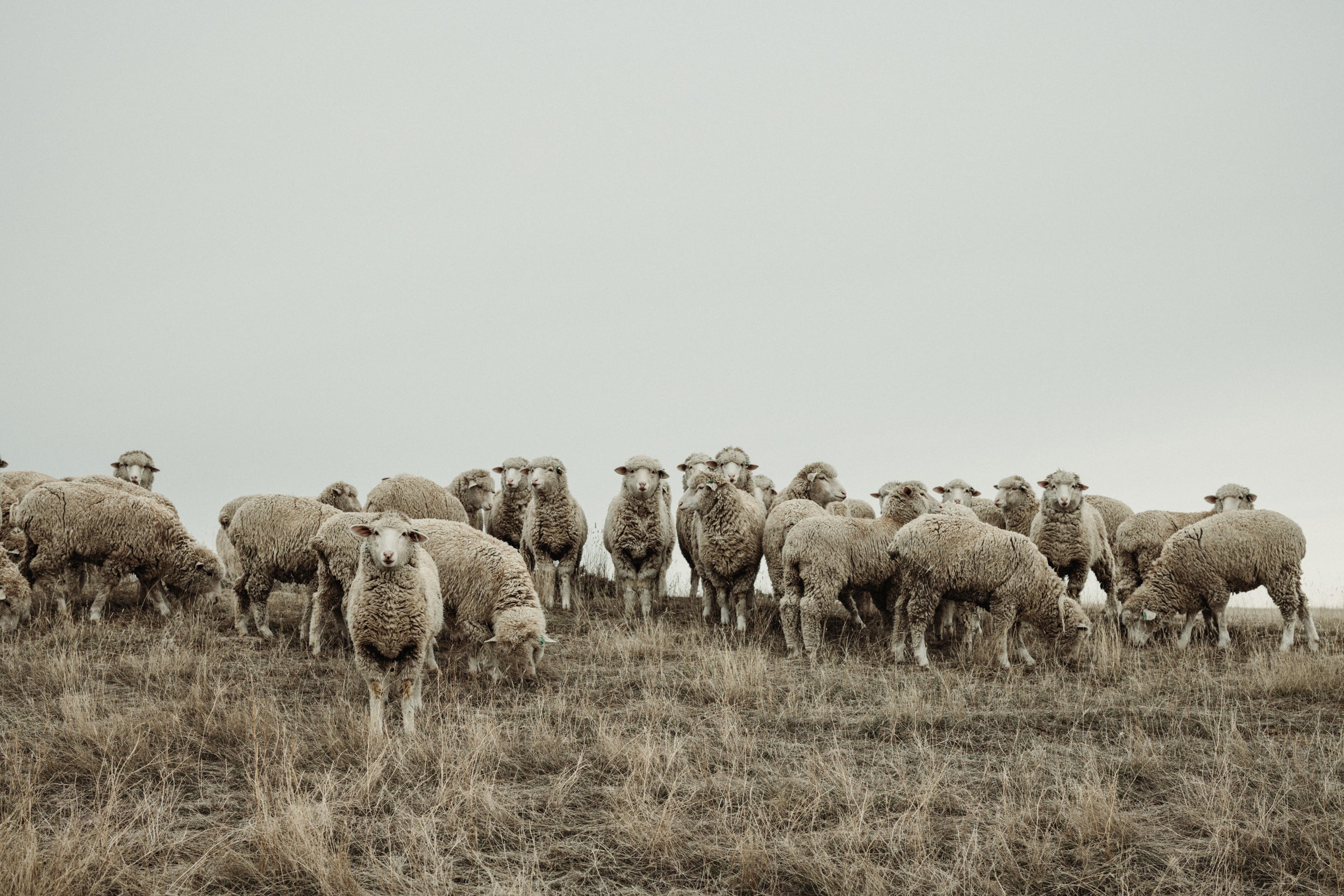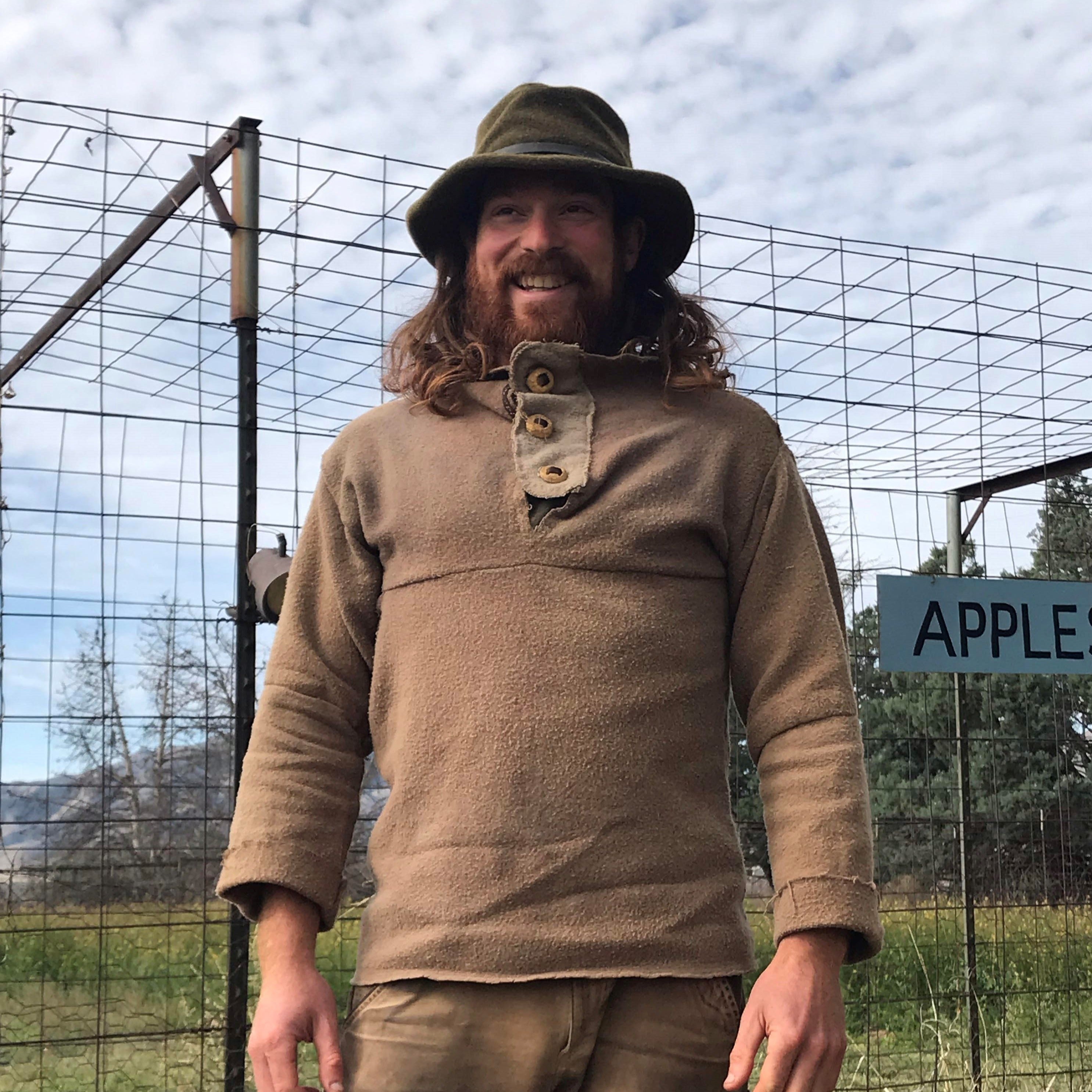
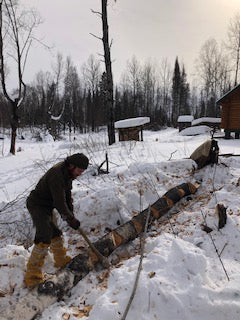
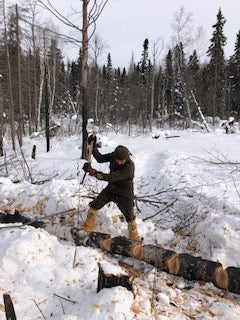
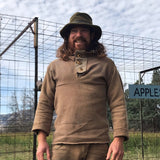
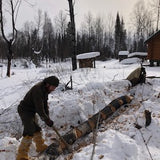
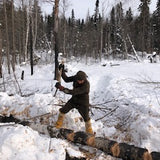
Jesse Manuta
OUTDOORS PROFESSIONAL -- OFF-GRID
ALASKA
Phone: 520-508-0755
Email: oauriFarm@gmail.com
Specialties: Nature, Axes, Hiking, Natural Farming, Moccasin/Mukluk Sewing, Log Building, Cooking, Wild Food Processing, Forestry
Jesse is the inspiration and a Lead Designer of WeatherWool's forthcoming Runner Shirt.
Biographical information, as written by Jesse:
As the yellow birch leaves twirl and settle down to the ground, I reflect back on the past six years that can all be traced back to WeatherWool and the fabric that allowed my goals to become reality. How do we know what is possible, achievable - until we push the limits to pursue the desires most prominent in our minds? When I first became a WeatherWool advisor, I was an organic farmer living in Southeast Arizona. I would run and hike in those rugged mountains, which is why I first sought out a wool fabric that could equal the extremes of the trail. There was this nagging though - I wanted more trees, running rivers, and deep snow. From here, my wife and I began packing the car and exploring the continent, searching for a place to settle. We wanted a pristine wilderness that had not been contaminated by humanity, an intact ecosystem that would support a natural farm. During this time, we purchased a property in the Upper Peninsula of Michigan, completely surrounded by Ottawa National Forest. We moved over a thousand pounds of gear and food through melting snow on a toboggan. What we found was a whisper of the potential of what is still possible. Despite living like we were still in the 1800’s, we could still hear generators, trains, chainsaws, and semi-trucks. Not good enough. So, we packed and moved – again then again. It seemed the only constant during this time was the incredible wool we clothed ourselves in. Instead of becoming deterred, we focused on acquiring skills. I learned traditional log building, butchering, hide tanning, moccasin and mukluk sewing, and forestry. While living in an off-grid log cabin near Ely Minnesota for a winter, I taught myself to turn a tree in the forest into firewood with only an axe. Despite temperatures near and below zero Fahrenheit, I found I could comfortably work with only WeatherWool. I would often even have to shed my FullWeight layer to be wearing only MidWeight. The steam would rise from my back and shoulders, leaving my skin dry. One of many experiences that left me in awe of how this fabric performs out in the elements.
I have learned that persistence is one of the ways to reach your goal. Finally, we went to the last land: Alaska. Where else can one still rely on pristine-wild animal foods for sustenance and have birch trees? In the sub-arctic climate WeatherWool thrives, like every other environment I have punished this wool through. WeatherWool has outperformed itself in the high desert, temperate rainforest, and boreal forest.
You could say, we are only now at the beginning. I honestly know that I could never have arrived at this precipice without WeatherWool. This fabric has changed what I thought were my limits. I know that if I’m caught out in a thunderstorm miles from home despite the air temperature hovering around 40F, I will delight in the unexpected deluge. What if I have to break trail through a couple feet of snow? No snow is capable of penetrating the FullWeight fabric. One of the biggest surprises with WeatherWool fabric is that I have begun using the MidWeight fabric as a rain jacket in the warmer months. I am just significantly more comfortable in the wool compared to wearing a waxed canvas jacket, which when saturated sort of gives one a feeling of being trapped, you know what I mean? The wool allows my skin to breathe and remain dry even if the wool is wet on the outer layer. If you have never experienced this phenomenon, then give it a try.
I see WeatherWool as a partner, I can always trust the wool to be reliable. With WeatherWool on my back - wrapped around my legs, anything becomes possible. I know where the wool has taken me the past six years, the question is - where will it take me for the next six?
*************************************
In the photo at left, Jesse wears the WeatherWool Shirt he made and dyed himself. The photos below show the shoes Jesse mentions. --- Ralph


In July of 2023, Jesse sent a nice note:
30 August 2025 --- Written by Jesse




